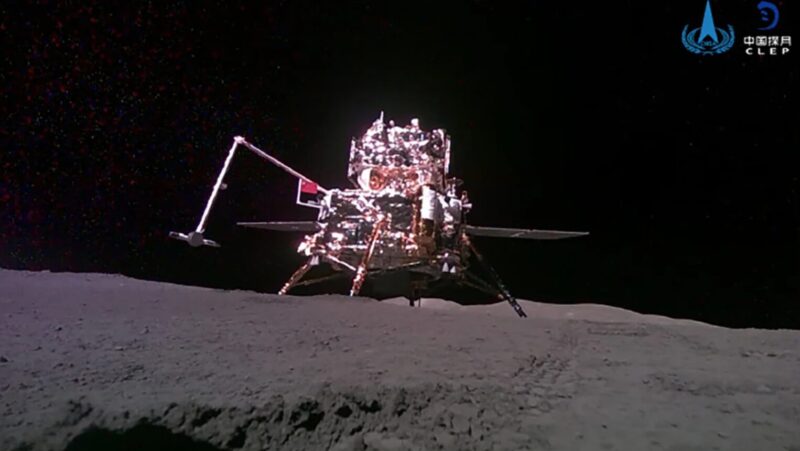Earlier this week, China’s Chang’e 6 probe landed on the far side of the Moon after a month-long journey from Earth. It collected the first samples ever from that mysterious, long-unseen region and is now returning home.
China is the only country to land successfully on the Moon’s far side. The Chang’e 4 craft landed five years ago, in 2019. This week marks the second soft landing. It is also the first sampling mission on that side of the moon, according to the China National Space Administration.
The lander’s camera filmed the probe landing in the South Pole-Aitken Basin. The crater is 2,500km wide and up to 8km deep. This footage is unlike anything we have seen before. We can’t see the far side of the Moon because it is what’s called tidally locked. It rotates in exactly the same time it takes to orbit the Earth, so the same face is always turned toward us. As a result, there has always been intense curiosity about that side of our satellite.
Dark side not dark
We first saw images of what used to be called the Dark Side of the Moon — although it’s not dark, just unseen — in 1959. That year, the Soviet Union’s Luna 3 spacecraft sent photos back to Earth.
Since then, other spacecraft have taken pictures, but missions to the far side are rare. The ground is littered with craters, and the difficult terrain makes landings incredibly hard.
Over two days, the probe used a drill and a mechanical arm to collect two kilograms of soil and rock samples from its landing site. These are now on the way back to Earth. Before taking off, the probe stuck out a little robotic arm that waved the Chinese flag.
The craft is scheduled to land back in the desert of Chinese Mongolia on June 25.
Stunning footage of the Chang’e 6 Lunar Lander Operating on the Moon.
Just released footage of the spacecraft collecting soil and rock samples from the Moon’s far side.Ascent stage has already left the Moon with the collected samples, scheduled to return to Earth on June 25. pic.twitter.com/YyltuB2Yfy
— Toby Li (@tobyliiiiiiiiii) June 4, 2024
New space race
The success of this project is a huge advance for lunar missions and China’s space program, in particular. We are in a 21st-century lunar space race, and several countries are now competing to send manned missions and set up bases on the Moon. China hopes to send manned flights by 2030 and to build a permanent research base in its south pole. One of the reasons they chose the south pole as a base is that it is thought to contain water ice.
The samples now on their way back to Earth are the first ever collected from this region. They may give more information on the Moon’s evolution and its soil’s components.
James Head of Brown University, who worked with Chinese scientists on the mission, told CNN, “The enigmatic lunar far side is so different from the lunar nearside in so many ways…Without returned samples, lunar scientists can’t fully understand the Moon.”






